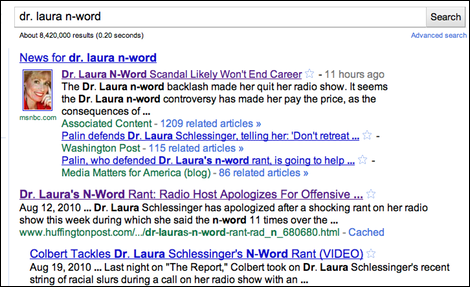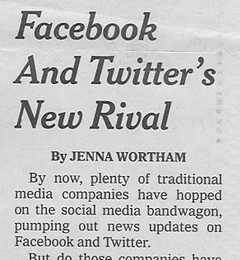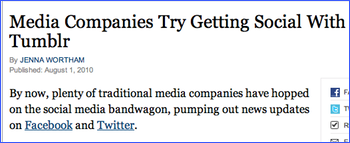This is the second post in a three-part series. The first part was Nick Carr, hypertext and delinkification. The third part is In links we trust.
The Web is deep in many directions, yet it is also, undeniably, full of distractions. These distractions do not lie at the root of the Web’s nature. They’re out on its branches, where we find desperate businesses perched, struggling to eke out one more click of your mouse, one more view of their page.
Yesterday I distinguished the “informational linking” most of us use on today’s Web from the “artistic linking” of literary hypertext avant-gardists. The latter, it turns out, is what researchers were examining when they produced the studies that Nick Carr dragooned into service in his campaign to prove that the Web is dulling our brains.
Today I want to talk about another kind of linking: call it “corporate linking.” (Individuals and little-guy companies do it, too, but not on the same scale.) These are links placed on pages because they provide some tangible business value to the linker: they cookie a user for an affiliate program, or boost a target page’s Google rank, or aim to increase a site’s “stickiness” by getting the reader to click through to another page.
I think Nick Carr is wrong in arguing that linked text is in itself harder to read than unlinked text. But when he maintains that reading on the Web is too often an assault of blinking distractions, well, that’s hard to deny. The evidence is all around us. The question is, why? How did the Web, a tool to forge connections and deepen understanding, become, in the eyes of so many intelligent people, an attention-mangling machine?
Practices like splitting articles into multiple pages or delivering lists via pageview-mongering slideshows have been with us since the early Web. I figured they’d die out quickly, but they’ve shown great resilience — despite being crude, annoying, ineffective, hostile to users, and harmful to the long-term interests of their practitioners. There seems to be an inexhaustible supply of media executives who misunderstand how the Web works and think that they can somehow beat it into submission. Their tactics have produced an onslaught of distractions that are neither native to the Web’s technology nor inevitable byproducts of its design. The blinking, buzzing parade is, rather, a side-effect of business failure, a desperation move on the part of flailing commercial publishers.
For instance, Monday morning I was reading Howard Kurtz’s paean to the survival of Time magazine when the Washington Post decided that I might not be sufficiently engaged with its writer’s words. A black prompt box helpfully hovered in from the right page margin with a come-hither look and a “related story” link. How mean to Howie, I thought. (Over at the New York Times, at least they save these little fly-in suggestion boxes till you’ve reached the end of a story.)
If you’re on a web page that’s weighted down with cross-promotional hand-waving, revenue-squeezing ad overload and interstitial interruptions, odds are you’re on a newspaper or magazine site. For an egregiously awful example of how business linking can ruin the experience of reading on the Web, take a look at the current version of Time.com.
[Read more…]









